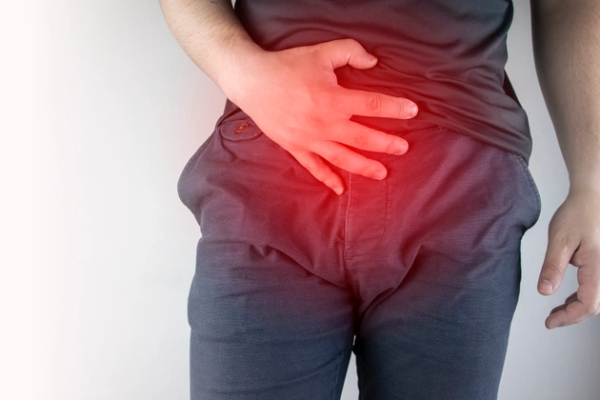
Inguinal Hernia Repair Surgery
What is an inguinal hernia?
Inguinal hernia is the abdominal cavity houses various structures, including the intestines, which are safeguarded by the abdominal wall composed of four layers. However, weaknesses can occur in the muscular layer, causing the contents of the abdomen, along with the inner layer, to protrude through the abdominal wall, resulting in a lump known as a hernia.
Specifically, an inguinal hernia occurs at the inguinal canal, which is a narrow passage through the abdominal wall.
Our general surgery department also performs operations for the following hernias:
- Hiatal hernias (stomach pushing into the chest)
- Incisional hernias (develop along an incision)
- Recurrent hernias (come back after treatment.
- Umbilical hernias (navel)
- Ventral hernias (abdomen)
The Package Includes:
- General Surgeon fees w. assistant surgeon
- Pre-op consultation with anesthesiologist and regular blood tests
- Operating Room Charges
- Accomodation for 1 night in the surgical floor including; Standard Room, Nursing Service Charges, Regular Menu Food Charges for patient and 1 accompanying person.
- Procedure-related laboratory tests and radiology
- Medical equipment and supplies for the procedure
- Procedure-related medications
- E-consultation with the surgeon in the post-up period in the home country
How is the inguinal hernia repair surgery performed?
The procedure is typically conducted with general anesthesia and usually lasts around 30 minutes (or less than an hour if repairing both sides).
During the surgery, your surgeon will make a small incision near your belly button, through which they will insert an instrument to inflate your abdominal cavity with carbon dioxide gas. They will then make two additional small incisions in your abdomen to insert tubes, called ports. Through these ports, your surgeon will insert surgical instruments, including a telescope, to visualize the inside of your abdomen and perform the operation.
Next, your surgeon will carefully return the part of your abdomen that is causing the hernia to its proper place, and place a synthetic mesh over the weakened area to provide reinforcement.
How is the preparation and the recovery period after the procedure?
Quitting smoking can potentially lower your risk of complications and improve your overall health in the long run. It’s important to maintain a healthy weight, as being overweight increases the risk of complications associated with hernias.
Regular exercise can help you prepare for the surgery, aid in recovery, and promote long-term health. However, avoid exercises that involve heavy lifting or cause pain in the hernia area. Before starting any exercise routine, it’s advisable to seek advice from your healthcare team or GP.
How soon can the patient travel back home after the procedure?
You should be able to be discharged the day after the surgery, and resume your normal activities when you feel comfortable, which is typically after a week.

